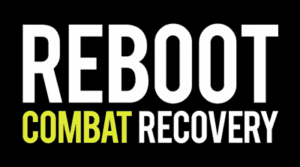The goal for healthy marriage communication is to complete the journey from facts to feelings
So she sent and called Jacob her younger son and said to him, “Behold, your brother Esau comforts himself about you by planning to kill you. Now therefore, my son, obey my voice. Arise, flee to Laban my brother in Haran and stay with him a while, until your brother’s fury turns away—until your brother’s anger turns away from you, and he forgets what you have done to him. Then I will send and bring you from there. Why should I be bereft of you both in one day?” (Genesis 27:42b–45)
Alienation from and between their children was the result of the deceptive practices of Isaac and Rebekah. Who was to blame for their communication fiasco? Looking at the story as a whole, we can conclude that Isaac failed to share his goals with his wife while Rebekah was not forthright with her husband.
 When it came to their physical interaction, however, the Bible indicates they communicated very well. Midway in their marriage, Isaac and Rebekah moved for a time to Gerar where we get a glimpse of the physical passion they shared (Genesis 26:8). You may have heard the joke, “What’s the second thing your military husband takes off when he comes in from field duty? His rucksack.” Your husband might be quick to communicate physically, but it may take more time to share his feelings.
When it came to their physical interaction, however, the Bible indicates they communicated very well. Midway in their marriage, Isaac and Rebekah moved for a time to Gerar where we get a glimpse of the physical passion they shared (Genesis 26:8). You may have heard the joke, “What’s the second thing your military husband takes off when he comes in from field duty? His rucksack.” Your husband might be quick to communicate physically, but it may take more time to share his feelings.
The goal for healthy marriage communication is to complete the journey from facts to feelings. The most basic level of communication is sharing facts and ideas. Think small talk. This is not deep—on the order of “How was your day?”—but such communication connects you to one another as you inform each other about life outside of your relationship.
Sharing facts can only take you so far; you must be willing to share thoughts and ideas. This level of communication becomes more risky and could lead to disagreement and judgment. Trust grows as a couple is willing to hear opinions, discuss differences, and remain open to hearing another view.1
The most effective communication is to be able to share feelings and needs. Communication on this level opens the door to understanding. Marriage experts Gary and Barbara Rosberg compare this to exploring a cave “with a vast labyrinth of underground caverns someone could spend a lifetime exploring … every step, every turn in the labyrinth, every new day of exploration yields surprises and challenges too good to miss.”2 The journey to deep, heartfelt communication will not be easy, but the discoveries will be worth the effort.
Respond
Consider these sure communication killers. Check any you have used with your husband in the last month:
☐ overgeneralizations (always, never);
☐ derogatory names;
☐ ridicule and sarcasm;
☐ offensive comments;
☐ the silent treatment.
Relationship specialist John Gottman instructs couples to work toward a ratio of five positive interactions to every one negative. Positive interactions include such relationship builders as a smile, a touch, changing the course of negative conversation, and positive, affectionate, encouraging comments.3 Consider the ratio of communication killers to relationship builders in your marriage. How does your marriage math add up?
Prayer for the Journey
Lord, help my marriage to be built on wisdom and established through understanding (Proverbs 24:3). Amen.
1 Randy Fujishin, Creating Communication: Exploring and Expanding Your Fundamental Communication Skills (Lanham, MD: Rowman & Littlefield Publishers, 2009), 42.
2 Gary and Barbara Rosberg, Divorce-Proof Your Marriage (Nashville, TN: Tyndale House, 2002), 136.
3 Hara Estroff Marano, “Marriage Math,” www.psychologytoday.com, March 16, 2004. https://www.psychologytoday.com/articles/200403/marriage-math. Accessed May 18, 2015.




